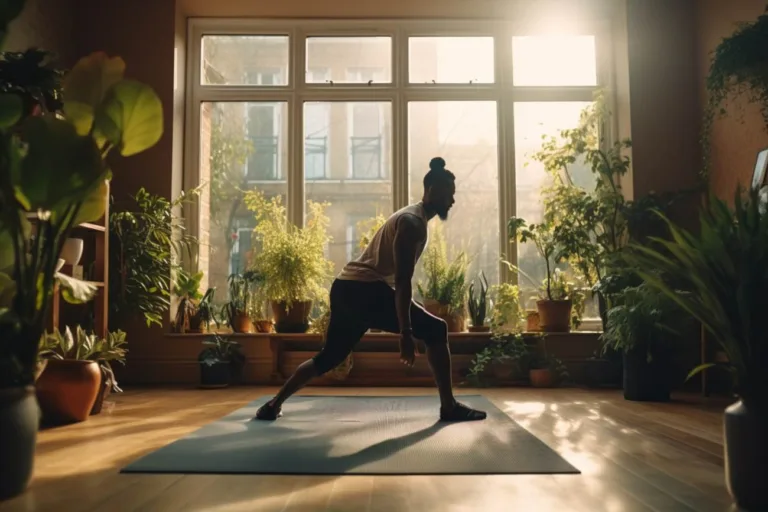Reverse lunges are a highly effective exercise that can help you build strength, improve balance, and enhance your overall fitness level. In this comprehensive guide, we will explore the benefits of reverse lunges, proper form and technique, variations, and frequently asked questions to help you master this fantastic exercise.
The benefits of reverse lunges
Reverse lunges offer a wide range of benefits for both beginners and advanced fitness enthusiasts. Here are some of the key advantages:
- Leg Strength: Reverse lunges primarily target the quadriceps, hamstrings, and glutes, helping to build lower body strength.
- Better Balance: Performing reverse lunges can enhance your balance and stability as it requires you to control your body’s movement.
- Core Engagement: These lunges engage your core muscles, helping to improve core strength and stability.
- Functional Fitness: The motion of reverse lunges mimics everyday activities like climbing stairs or getting out of a chair, making it a functional exercise.
- Joint Health: When executed correctly, reverse lunges can promote better joint health by improving range of motion and reducing the risk of injury.
Proper form and technique
Performing reverse lunges with the correct form is crucial to maximize their benefits and prevent injury. Follow these steps:
- Stand Tall: Begin by standing with your feet hip-width apart and your back straight.
- Step Back: Take a step back with one foot, landing on the ball of your foot.
- Lower Your Body: Bend both knees to lower your body toward the ground, ensuring your front knee is directly above your ankle.
- Push Back Up: Push through your front heel to return to the starting position.
- Repeat: Complete the desired number of repetitions on one leg before switching to the other.
Tips for Perfecting Your Form
Keep these tips in mind as you perform reverse lunges:
- Maintain Good Posture: Keep your chest up and shoulders back throughout the exercise.
- Control the Movement: Move slowly and with control to prevent any sudden jerky motions.
- Focus on Balance: Engage your core muscles to help with balance.
- Use Proper Breathing: Inhale as you step back and exhale as you return to the starting position.
Reverse lunge variations
Once you’ve mastered the basic reverse lunge, you can add variety to your workout routine with these variations:
| Variation | Description |
|---|---|
| Walking Lunges | Take a step forward with each lunge, alternating legs as you go. |
| Dumbbell Lunges | Hold dumbbells in each hand to increase the resistance and intensity of the exercise. |
| Reverse Lunge with Knee Drive | After returning to the starting position, bring your knee up towards your chest for an added challenge. |
Frequently asked questions
1. How many reverse lunges should I do in a workout?
The number of reverse lunges you should do depends on your fitness level and goals. Start with 2-3 sets of 10-12 repetitions and adjust as needed.
2. Are reverse lunges suitable for beginners?
Yes, reverse lunges can be modified to suit beginners. Start with bodyweight lunges and gradually add resistance as you become more comfortable with the exercise.
3. Can reverse lunges help with knee pain?
If performed correctly, reverse lunges can actually help strengthen the muscles around the knee joint, potentially reducing knee pain. However, it’s essential to consult with a healthcare professional if you have specific concerns.
4. How often should I include reverse lunges in my workout routine?
You can include reverse lunges in your routine 2-3 times a week, allowing your muscles to recover between sessions. Always listen to your body and avoid overtraining.
5. Can reverse lunges be part of a weight loss program?
Yes, reverse lunges, along with a balanced diet and cardio exercises, can contribute to a weight loss program by increasing calorie expenditure and building muscle.
Now that you have a comprehensive understanding of reverse lunges, you can incorporate them into your fitness routine to enjoy their numerous benefits. Remember to prioritize proper form and technique, and consult with a fitness professional if you have any specific concerns or goals.
Zobacz także:






